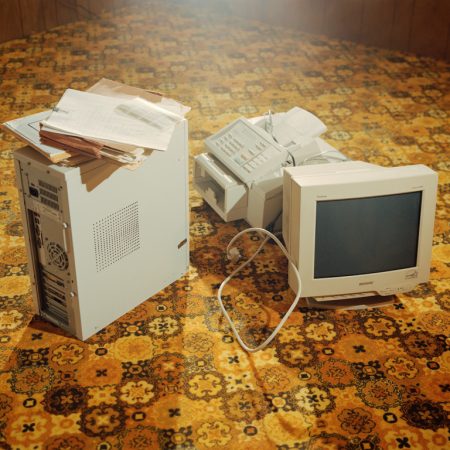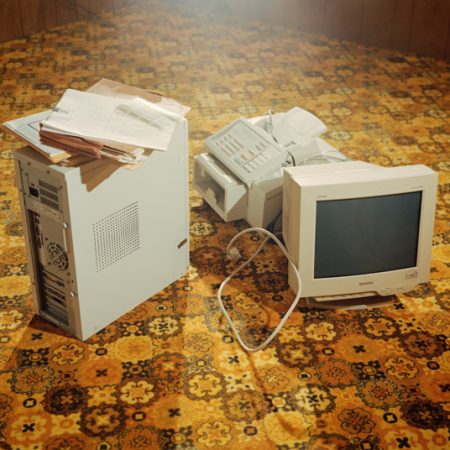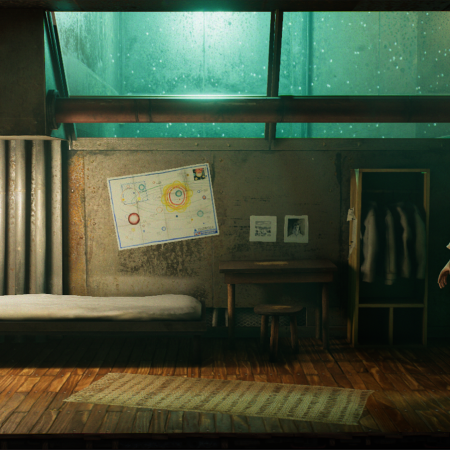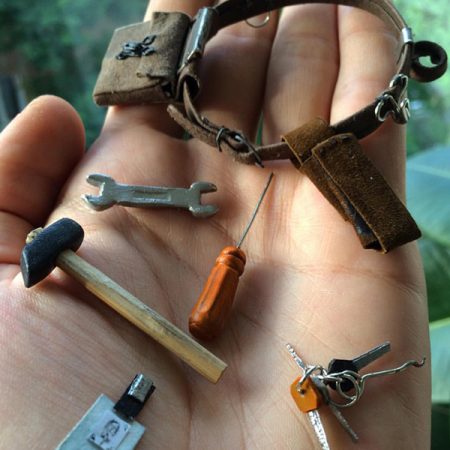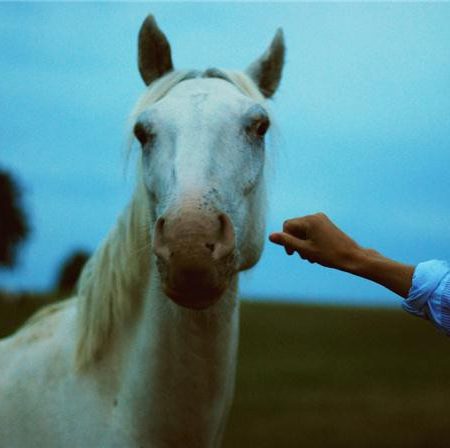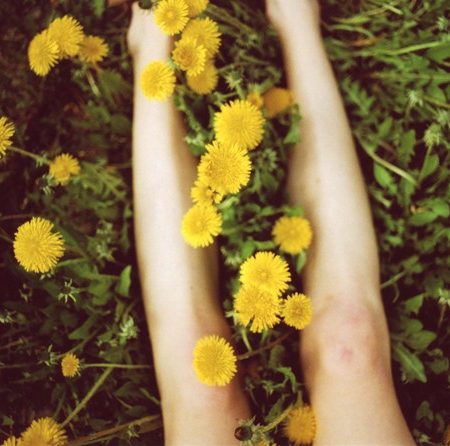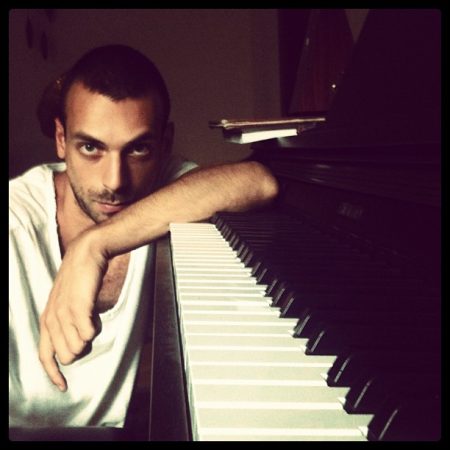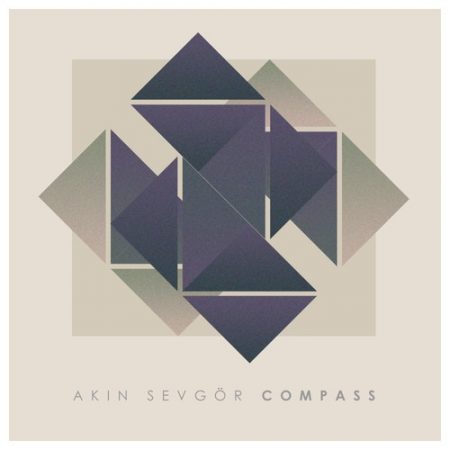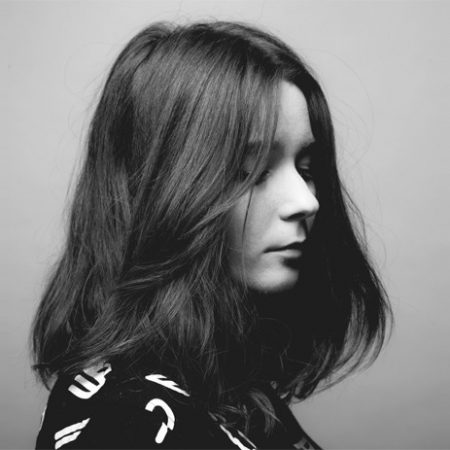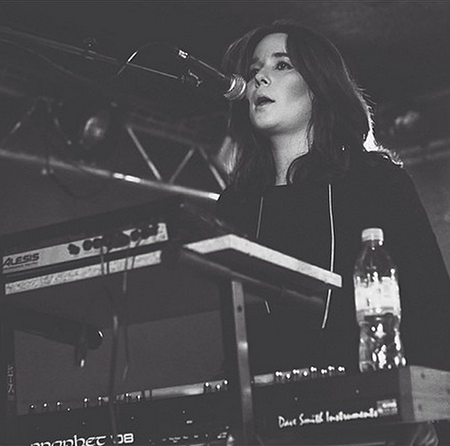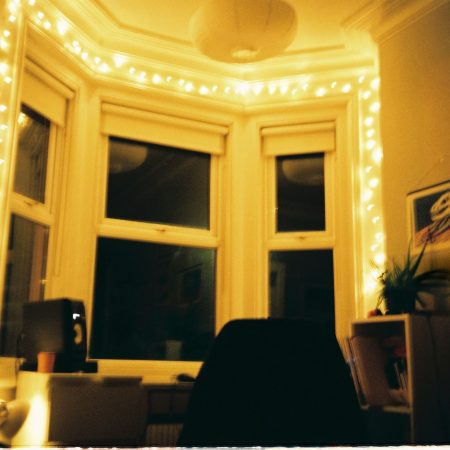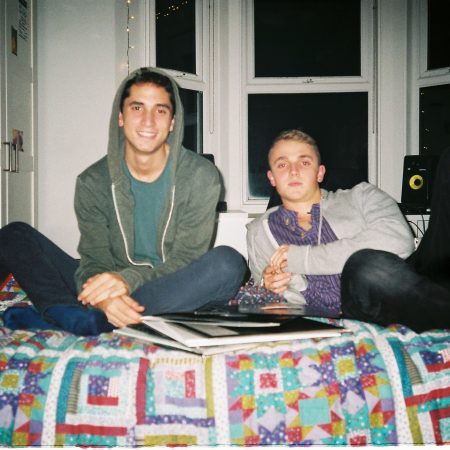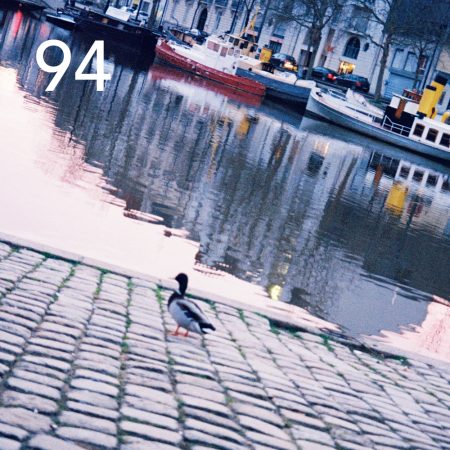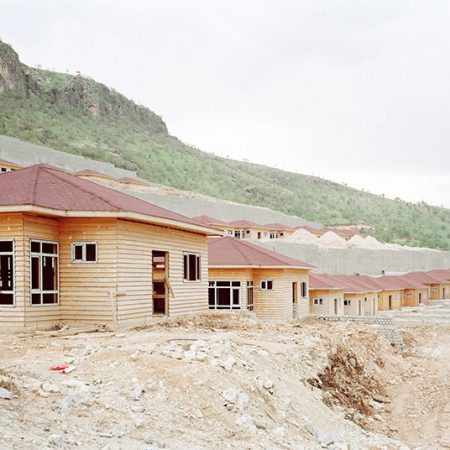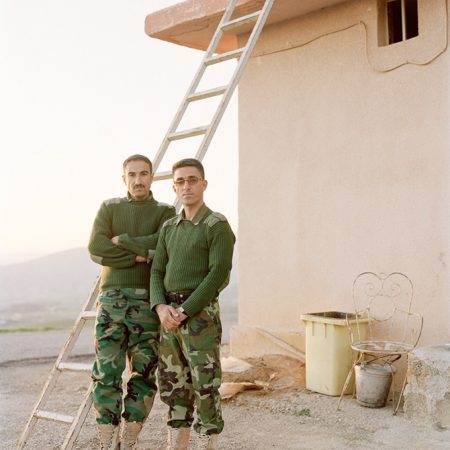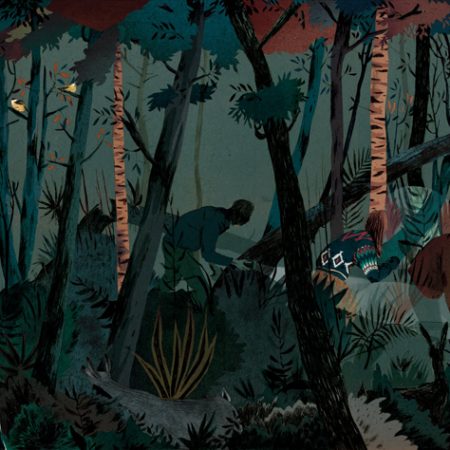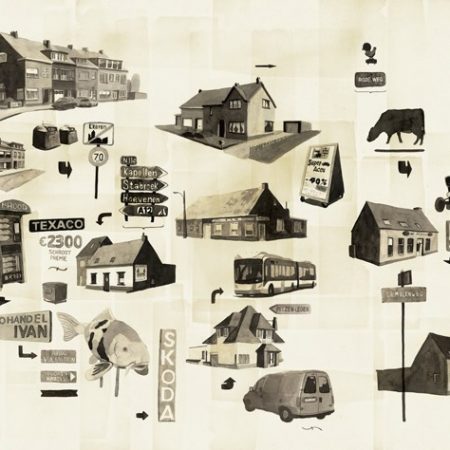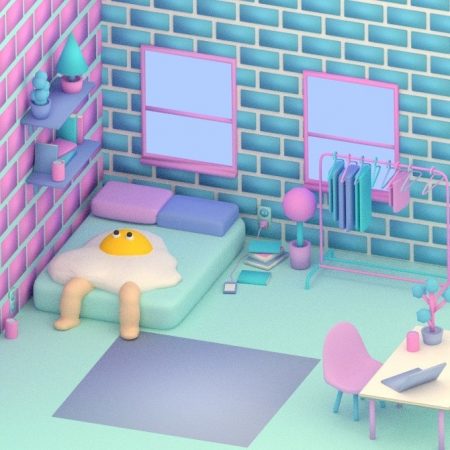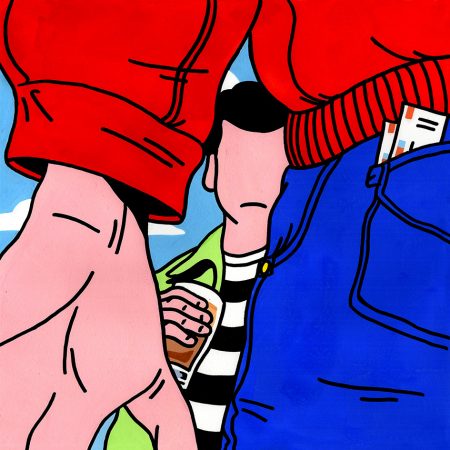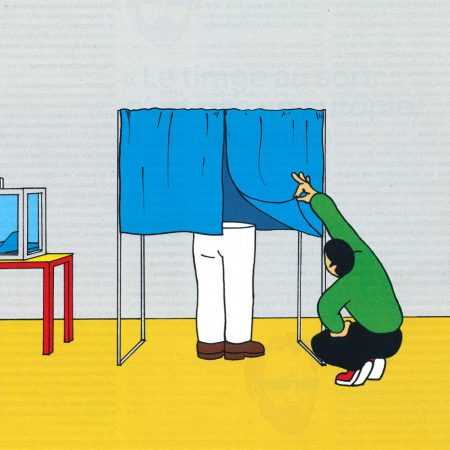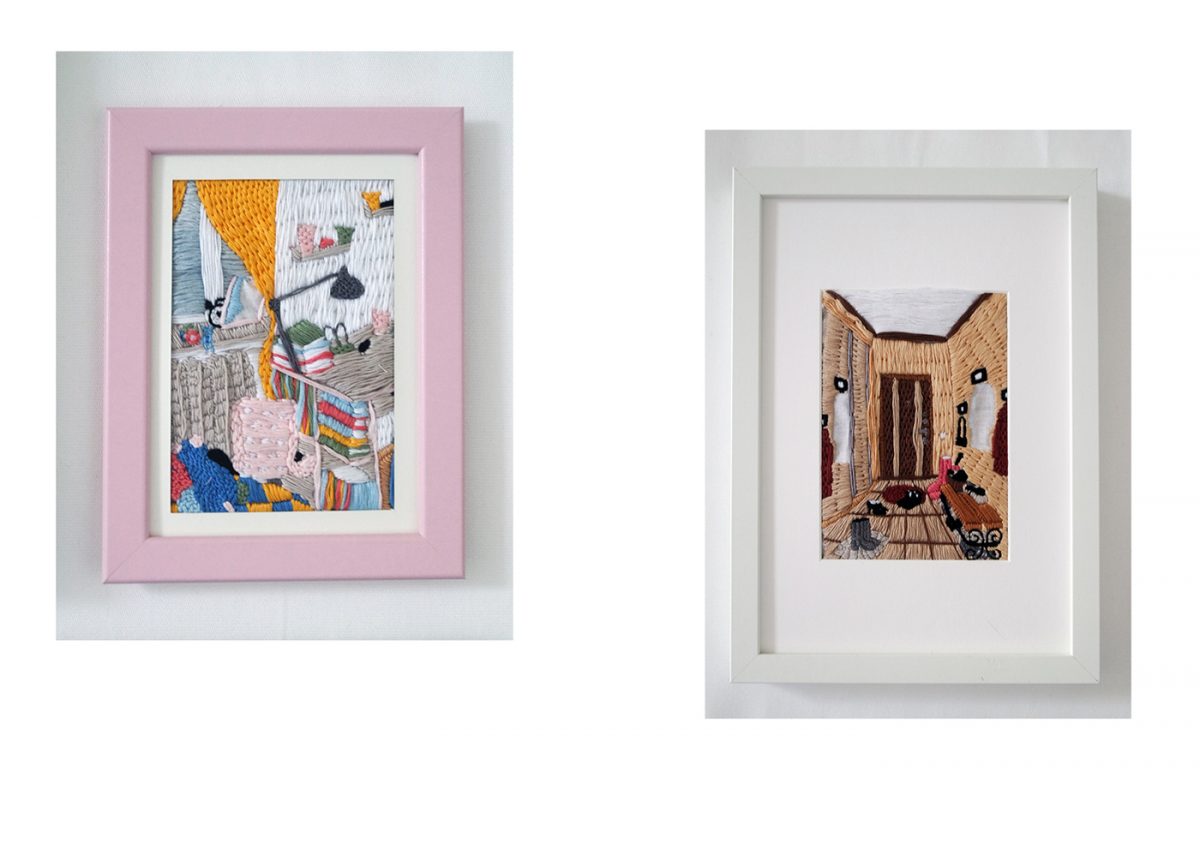
Embroidery serie about the absence of her father.
Anastasia Zhenunk
ART . October 13th, 2017Hi Anastasia,
what have you been doing today?
Today, I had some time before work and did a little bit of embroidery for my personal project, which is a secret.
Where do you come from and what do you do in life?
I am from Moscow, Russia. As for today, I am working full time as an editorial illustrator in an online magazine and do embroideries for freelance and personal projects.
What’s your favorite artwork?
This is a really tough question. If talking about my own works it would probably be one of the embroideries from the “The Women’s House” with toothbrushes. I like how trivial the scene is, but at the same time it tells an important story behind it. And if talking about the whole art and illustration area, it is a lot harder to decide. But as for today, I would say that one of my favorite works is a book called “Panther” by Brecht Evan. It is an incredibly beautiful book and thought provoking story. Also, I really enjoy works by Faye Moorhouse because of it’s naivety and the fact that they are appealing because they are a bit disturbing.
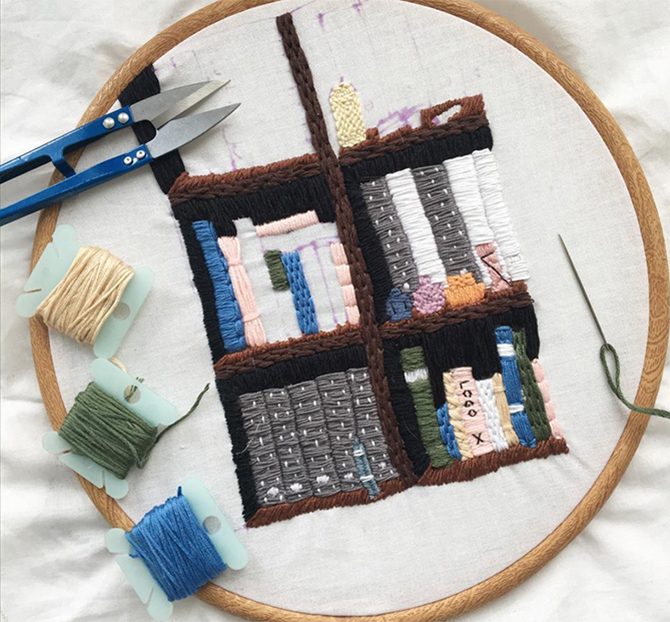
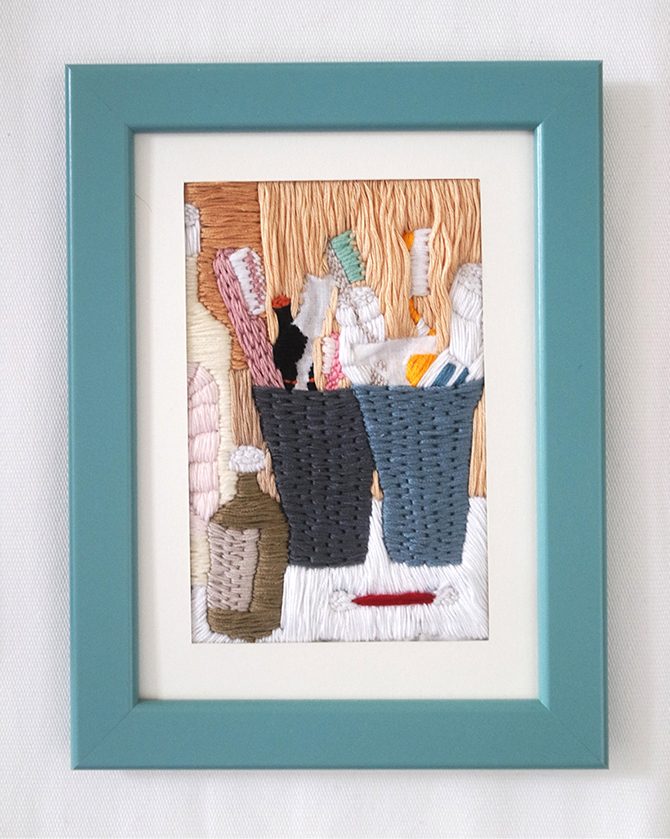
What was it when you were 15 years old?
It is easy to say that my favorite pieces of art were Modigliani’s portraits. I believe that I absorbed a lot from his style.
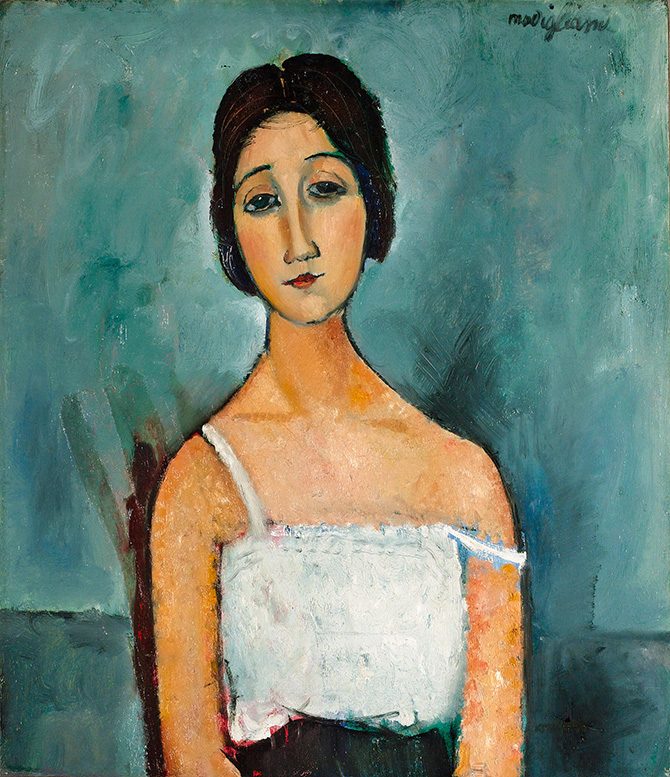 Amedeo Modigliani – Christina, 1916, oil on canvas, 80 × 69 cm
Amedeo Modigliani – Christina, 1916, oil on canvas, 80 × 69 cm
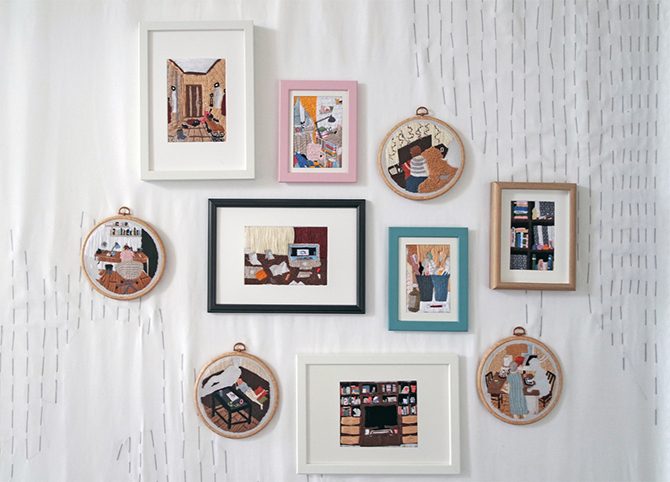
Can you explain us the idea behind the great “The Women’s House” project? (see picture above)
The women’s house was my final major project for BA illustration course. My degree essay was dedicated to analysis of the craftivism movement origins, as well as craft in feminist art. After digging into this theme I was really interested in creating something that would work around embroidery’s stigma of purely feminine art, but at the same time would empower women. And then I realized that these women are right in front of me.
Three years ago I suddenly lost my father and my family of 4 women (my mother, my nan, my sister and me) were left all alone with everything. We never had chance to live through this trauma, as we needed to live further for my little sister, to deal with all the financial and father’s business related problems. Because I never let it go, I started to notice my father’s presence through absence of objects and silhouettes: this was his favorite place, here he always left his cigarettes and here he used to place his helmet; but around these missing elements the life was still going, creating new memories on these now empty places. I wanted to picture these empty places and honor my family’s life and strengths after tragedy. Embroidered pieces symbolize present/feminine, while empty fabrics are past/male.
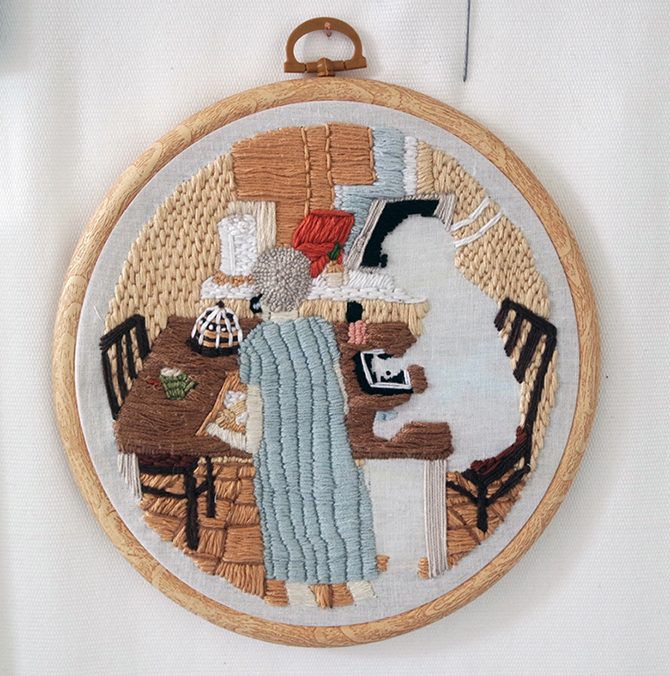
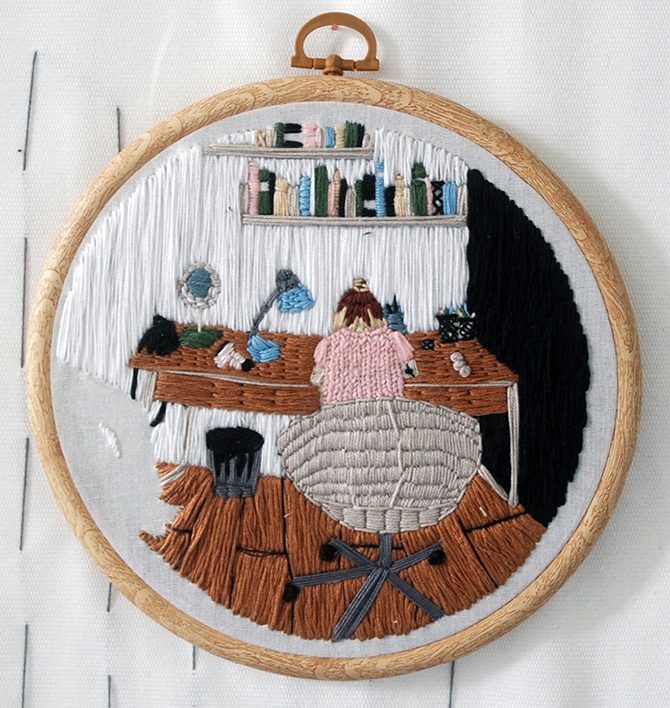
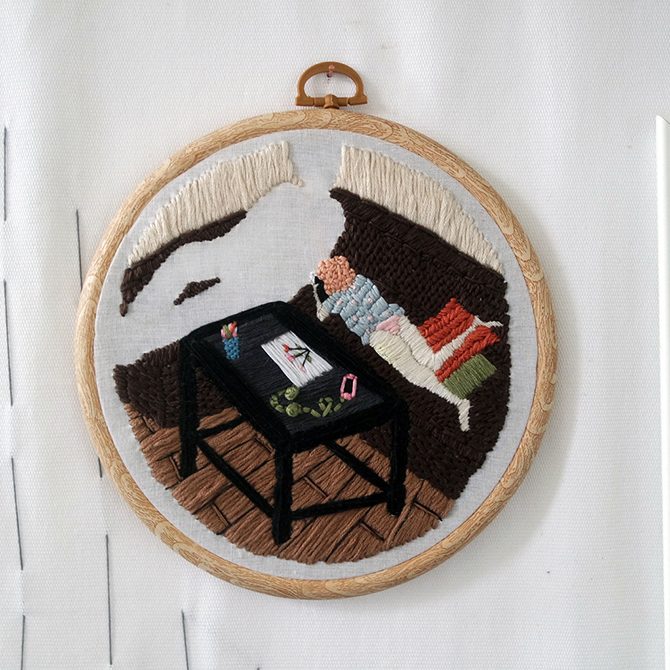
Who are the other women of your house ? Did they took part in any ways in this project?
As I already mentioned, the other women are my mother, my nan and my little sister. They didn’t took part in my project, but they supported me constantly during the production because it was really hard for me sometimes. It felt kind of like a therapy, as embroideries take quite a lot of time, I lived through my sorrow and accepted everything that happens through my embroideries
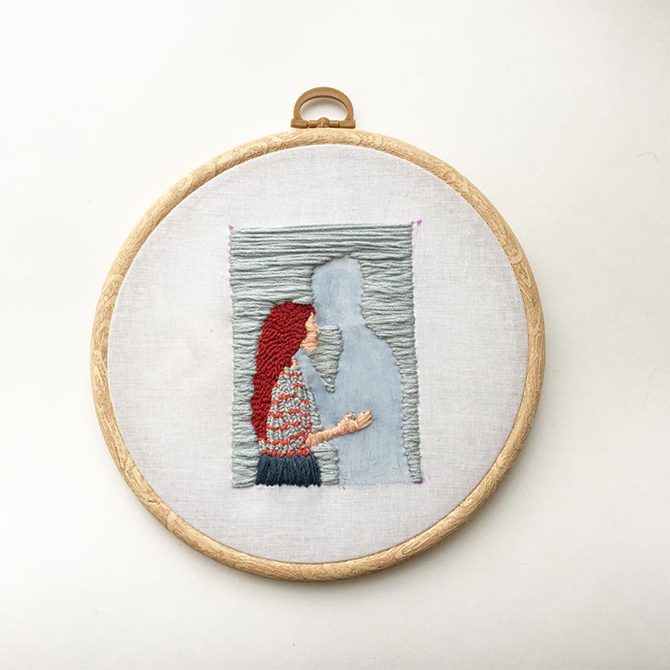
How long does it take you to sew a piece like this one? (see picture above)
This one was quite quick, it took me one whole working day, because I used mixed media. But usually it takes me around a week to finish my work.
What do you like about this technique?
I love the process, the meditation aspect of it. Usually I come up with nice ideas or solutions (art and life related) while stitching. Another thing that I love, is that you can always go back, loose the threads and start over. Blanc fabric doesn’t scare me as much as white space.
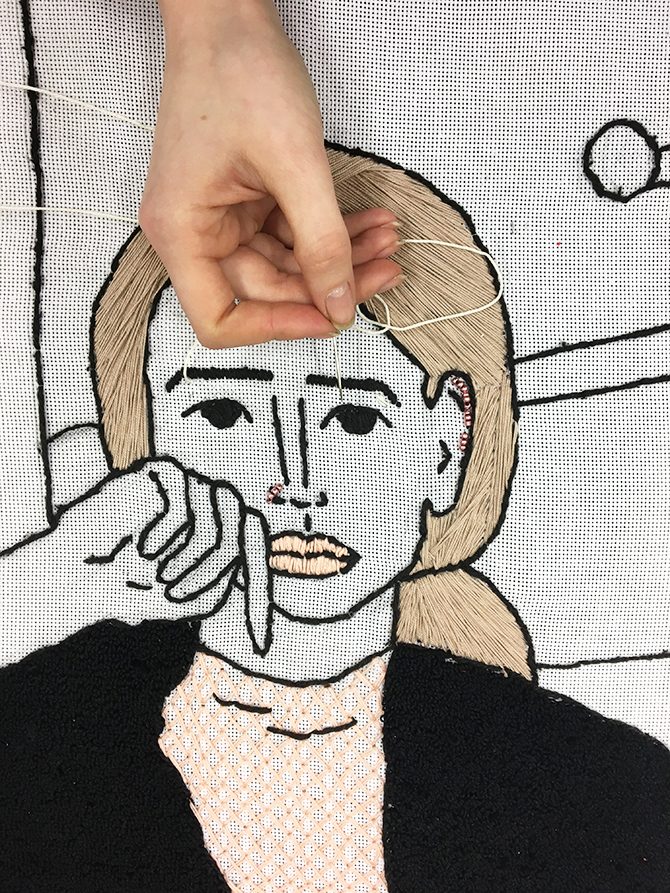
Can you tell us about your project “Size Matters”? (see picture above)
Again, this was an university project. We had it two years in a row. The task is to choose one of your sketches and make it giant in a period of 24 hours that are stretched for 6 hours working periods from Monday to Thursday, on Friday you need to organize a small exhibition with it. Because I was really obsessed with embroidery at that time I decided that I am able to finish a 1×1 meter piece in 4 days, but I was never so wrong :). I was working for 12 hours everyday and was able only to finish the main character, a girl in a cafe. But I am still really happy with it, and what I’ve achieved in four days. From time to time I come back to this piece and work on it, hoping to finish it someday.
How many hours in a row can you spend doing embroidery ? Does it require some good patience skills?
I can do it forever and usually need to force myself to stop. But here is the things, I never have patience to draw, especially backgrounds for my illustrations, but I have a lot to do embroideries. I think this is weird.
Would you share with us some embroidery work of others artists that you like?
I think it would be nice to share some russian artists with you. One of the women that I follow and love the works of is Lisa Smirnova. She has such a unique, expressive style of stitching that it fascinates me. You can feel from her works how confidents she is with material and how she knows.
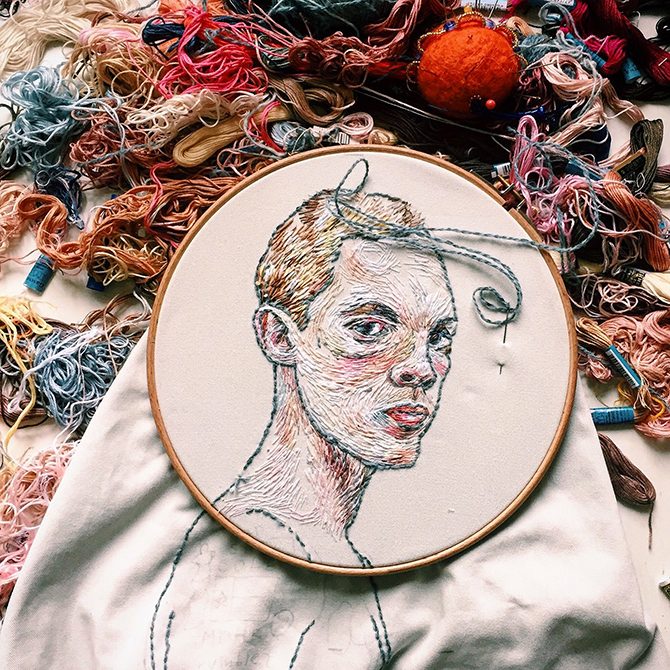 Portrait by Lisa Smirnova
Portrait by Lisa Smirnova
Another one is Fistashka. She makes amazing brooches that look just like painting techniques.
And the last one is Embroiderrred. What I like in her works is the color pallets and the way she works with textures on abstract forms.
What’s the next technique(s) you would like to work with?
I really want to learn weaving, but not the contemporary one with simple patterns and techniques, but the old school one, to produce complicated, massive tapestry like Erin M. Riley.
Anything you would like to share to end this interview?
There is one particular project that I would like to share with every artists. It is by my tutor Evgenia Barinova and it is a set of postcards for the people who need them. You can check them on her website here.
All of them have a translation in english.
Thank you very much Anastasia!
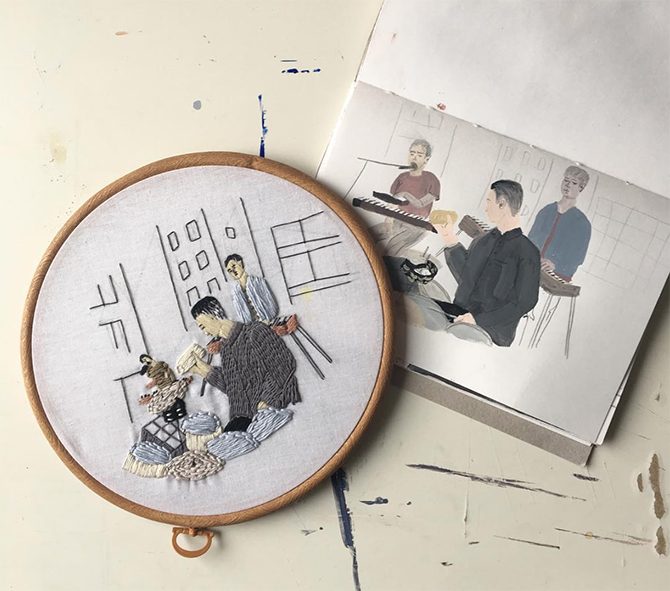
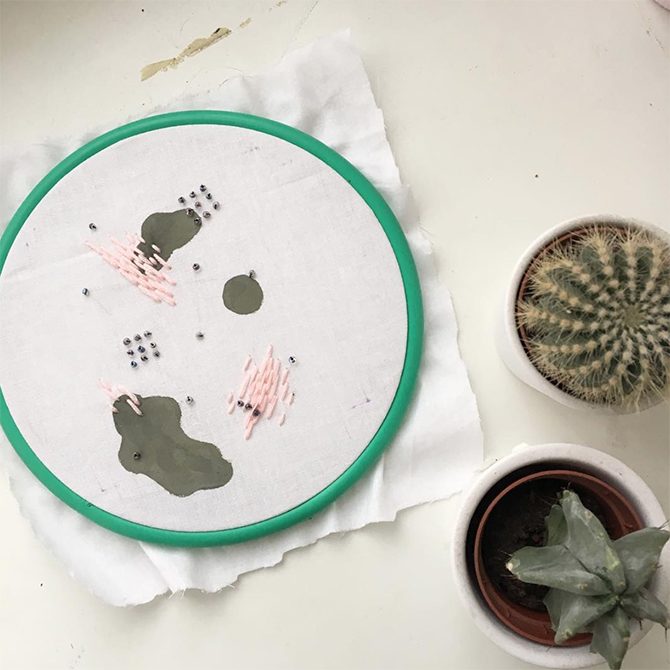
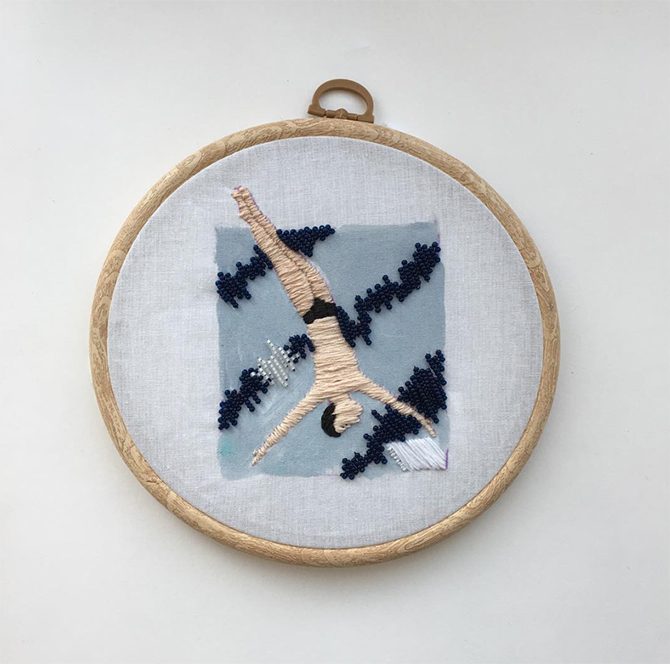
Anastia Zhenunk, russian illustrator, embroider and graphic designer.
+ zhenunk.me
